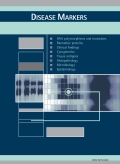Authors: Chen, Yung-Che | Chang, Huang-Chih | Chen, Chung-Jen | Liu, Shih-Feng | Chin, Chien-Hung | Wu, Chao-Chien | Chao, Tung-Ying | Lie, Chien-Hao | Wang, Chin-Chou | Lin, Meng-Chih
Article Type:
Research Article
Abstract:
Background and objective: Little is known about the usefulness of lymphocyte subsets as early predictors of anti-tuberculosis (TB) treatment response in immuno-competent patients. Methods: Among a total of 64 patients with culture positive pulmonary TB, 29 remained sputum smear/culture positive or had delayed resolution on CXR (slow responders (SR)), and 35 had sputum culture conversion to negative and rapid resolution on CXR (fast responders (FR)) after two months of anti-tuberculosis treatment. Clinical parameters and
…lymphocyte subsets were investigated. Results: A larger proportion of patients in the SR group had cavities on CXR, bilateral lung involvement, positive acid-fast bacilli stains, and complaint of cough at diagnosis than those in the FR group. Absolute counts of CD3^{+} T cells (p = 0.016) and CD8^{+} T cells (p=0.012) at diagnosis were both significantly higher in the SR group. This trend was present throughout the 6-month treatment course. Absolute T cell counts (odds ratio (OR) 1.002, 95% confidence interval (CI) 1.0–1.004), positive sputum acid fast bacilli stain (OR 6.69, 95% CI 1.37–32.77) and bilateral lung involvemment on CXR (OR 13.114, 95% CI 1.87–92.14) at diagnosis were independent predictors for a slow response. Combining these three predictors, a prediction score (PS) could be calculated to display an optimal discrimination for slow response (area under the curve (AUC)=0.855, p < 0.001), whereas absolute T cell counts yielded the highest discriminative value on an individual level (AUC= 0.676, p=0.015). Conclusions: A higher T cell count at diagnosis in patients with TB may predict a slow response to two months of treatment. The calculation of a PS further increased predictive accuracy and performance.
Show more
Keywords: Pulmonary tuberculosis, slow responders, absolute T cell counts, prediction score
DOI: 10.3233/DMA-2010-0714
Citation: Disease Markers,
vol. 28, no. 6, pp. 343-352, 2010
Price: EUR 27.50




